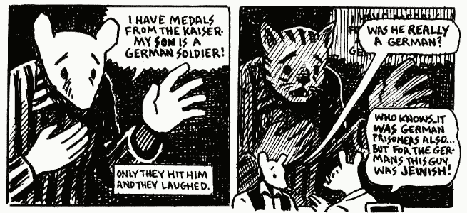There are different types of stereotypes. Race, age, cultural, professional, and gender stereotypes. This week, I decided to look into gender stereotypes, hence I read the Fun Home by Alison Bechdel. The mainstream media in general tends to portray gay and lesbian people in silly and disrespectful ways. How many times have they associated gays with pink, flamboyant outfits? And lesbians with super short haircuts and punk outfit? In reality, the physical distinctions are almost not noticeable (unless they choose to show it, of course!).
Fun Home offers a blunt approach in portraying gays and lesbians. The author, Alison Bechdel, is lesbian, and her dad is gay. At a glance, both of them looked very unassuming and act just like everyone. Alright, maybe not really. Her father was crazy about antiques, was a control freak, and had many affairs with young men throughout his marriage. He was also cold towards his children, arrogant, and very selfish in general. I loathed him for almost the entire book, but Alison's more sympathetic portrayal of him near the end redeemed him a little. Despite his harshness and aloofness, he respected Alison's interest in literature, and bonded surprisingly well with her later on. Alison's attempt at illustrating her rather unusual family brings an interesting perspective to how it might feel like to have a gay father.
On the other hand, Alison experienced a rather disturbing childhood. The absence of her father during his affairs, the tension between her father and mother, and Alison's own sexuality was a lot to take in for her younger self. Worse still, her father's sudden death meant that many loose strings were left; no closure regarding her father's wrongdoings and the loss of a close bond that she painstakingly built with him. I personally find it hard to understand what exactly was Alison's impressions about her father, since her descriptions of him swung from cynicism to respect. Throughout the book, I sense that she disapproved of her father's affairs, yet at the very last page of the book, as her child self is jumping into her father's arms, it's obvious that she still loved him. This very page also almost brought me to tears because of how evocative and sincere it was. After all the troubles her father brought upon himself (having multiple affairs, buying alcohol for an underage kid, etc....) she showed us that he was indeed still a father.
So, to tie this up with how the mainstream media portrays sexual stereotypes, Fun Home gives more depth and reasoning behind people's sexual orientations. It does not glamorize or condemn, it simply states that the absence of a father, paternal tension, and family divide are painful. Seeing her mother suffer through her husband's affairs, having her father die suddenly, and feeling isolated from the rest of the family probably drove Alison to write the book.
Admittedly, I didn't get most of the literally references found throughout the book, and nobody in the book is very like able. Most of them have that grumpy and dead-eyed look constantly, and Alison's narration feels aloof. Shocking revelations were stated in a matter-of-factly fashion, leaving little impact. I did have to force myself to finish reading this graphic novel. However, what helped motivate me was a desire for a sense of closure that Alison was searching for ever since her father's sudden demise. And the book did just that on the final page, and I am happy.



